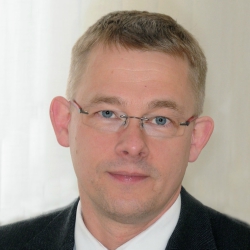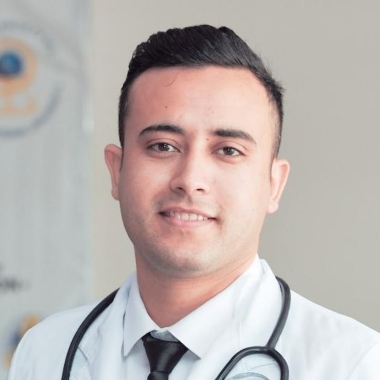University Hospital Magdeburg

Head of the Department
Prof. Dr. Rüdiger C. Braun-Dullaeus
Department of Cardiology and Angiology
Department of Cardiology and Angiology at University Hospital Magdeburg provides care for patients with acute and chronic heart diseases as well as blood vessel abnormalities. The department is certified by the German Cardiology Society as an Interventional Cardiology Center and also has earned the recognition of the Heart Foundation and the Heart Health Initiative of Saxony-Anhalt. FOCUS Magazine also recognized the facility as one of the best medical facilities of its specialty in Germany as it offers cutting-edge diagnostics and therapeutics for the fields of rhythmology as well as the implantation of pacemakers and defibrillators. Under the guidance of Prof. Dr. med. Rüdiger C. Braun-Dullaeus, the medical team treats over 2,800 inpatients every year. The research unit runs many research projects to investigate the origin of diseases, risk factors of heart attack, stroke, and peripheral arterial disease.
The Department of Cardiology and Angiology at University Hospital Magdeburg is specialized in the diagnosis and treatment of:
- Arrhythmia
- Aortic disease
- Congenital heart disease
- Coronary stenosis
- Deep vein thrombosis
- Heart attack
- Heart failure
- Cardiomyopathy
- Pericardial disease
- Heart valve disease
- Rheumatic heart disease
- Stroke
- 1987 Dissertation on the topic "The adenylyl cyclase system in acute myocardial ischemia: Mechanism of sensitization of adenylyl cyclase" with Prof. Dr. med. Ruth H. Strasser, Ruprecht-Karls-Universität Heidelberg, Internal Medicine / Cardiology (Head: Prof. Dr. med. W. Kübler) (until 1991)
- 1993 Award of the doctoral degree by the Ruprecht-Karls-Universität Heidelberg (grade: magna cum laude)
- 1995 DFG postdoctoral fellow (DFG Br 1603/1) (until 1998)
- 1995 Stanford University, Falk Cardiovascular Research Center, Department of Cardiology, Stanford University, Stanford, USA (Chief Physician: Prof. Dr. Victor J. Dzau, who accepted a call to Harvard University the following year)
- 1996 Transfer to Harvard University, Brigham and Women's Hospital, Department of Medicine (Chief Physician: Prof. Dr. Victor J. Dzau)
- 1997 Instructor of Medicine (employment by the Brigham and Women's Hospital as a scientific group leader) Harvard University, Brigham and Women's Hospital, Department of Medicine (Chief Physician: Prof. Dr. Victor J. Dzau)
- 1998 Head of the scientific working group "Molecular Cardiology" at the University Hospital Giessen, Center for Internal Medicine, Dept. Cardiology / Angiology (Head Physician: Prof. Dr. med. Harald Tillmanns) (until 2003)
- 2002 Habilitation in the field of internal medicine at the Justus-Liebig University Gießen on the topic: "The cell cycle in vascular medicine"
- 2003 Venia Legendi for the field of internal medicine
- 2003 Head of the scientific working group "Vascular Medicine" at the Medical Faculty of the Technical University of Dresden, Heart Center Dresden University Clinic (Medical Director: Prof. Dr. med. RH Strasser) (until 2008)
- 2003 Re-qualified from the Justus-Liebig University Gießen to the Medical Faculty Carl Gustav Carus of the Technical University Dresden in the field of internal medicine
- Since 2008 Director of the Clinic for Cardiology, Angiology, and Pneumology at Magdeburg University Hospital
Awards
- 1990 Rudolf-Thauer Prize of the German Society for Cardiology for the work: "Activation of protein kinase C in acute myocardial ischemia: mechanism of receptor-independent sensitization of the adenylyl cyclase system"
- 2001 Poster prize of the German Society for Internal Intensive Care Medicine and Emergency Medicine for the work: "Protective effect of 3-deoxyadenosine on septic cardiomyopathy"
- 2006 Franz Maximilian Groedel Research Prize of the German Cardiac Society for the work: "Calpain counteracts mechanosensitive apoptosis of vascular smooth muscle cells"




